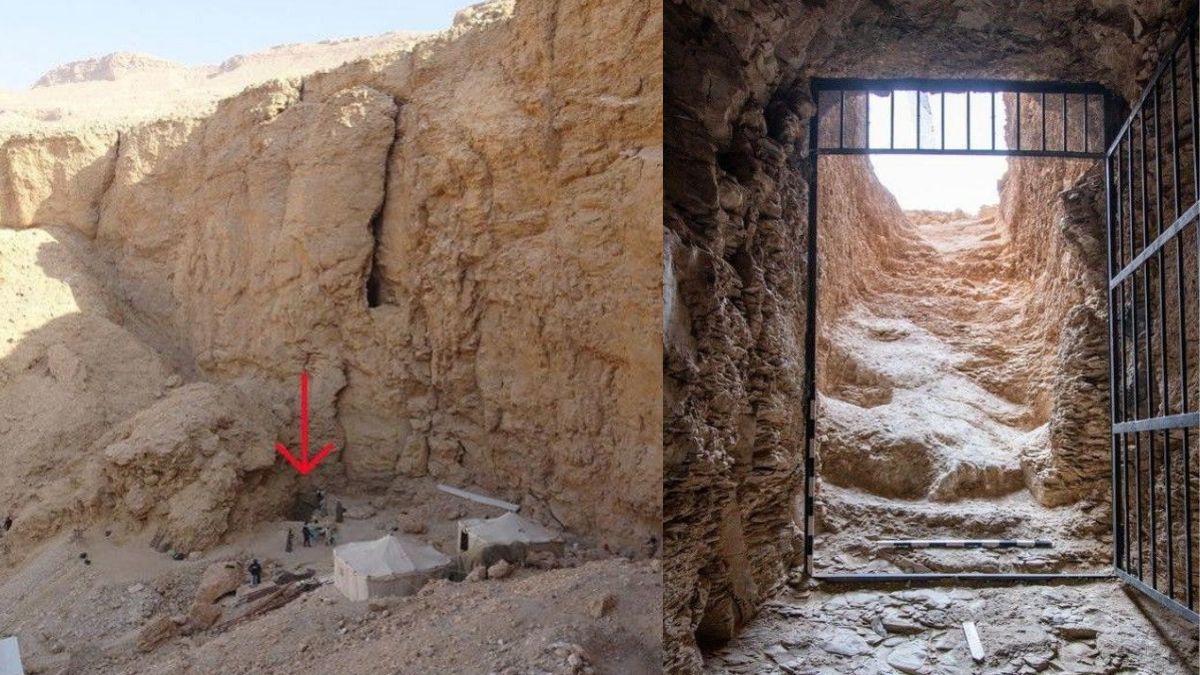A team of British and Egyptian archaeologists has uncovered the long-lost tomb of Pharaoh Thutmose II near Luxor, marking the first discovery of a pharaonic royal tomb in more than a century.
This monumental find is the most significant since Howard Carter unearthed King Tutankhamun’s tomb in 1922.
Led by Dr. Piers Litherland of the New Kingdom Research Foundation and in collaboration with Egypt’s Ministry of Tourism and Antiquities, the joint expedition identified the tomb west of the Valley of the Kings.
Archaeologists confirmed the tomb’s identity through alabaster jars bearing the name of Thutmose II and his wife, Queen Hatshepsut, one of Egypt’s most renowned female pharaohs.
The significance of the tomb
The tomb of Thutmose II, the fourth ruler of the 18th dynasty, was the last missing royal burial site from that period.
Despite his brief reign from approximately 1493 to 1479 BCE, Thutmose II played a crucial role in Egypt’s history, particularly as the husband of Hatshepsut, who later ruled as pharaoh in her own right, according to Claire Isabella Gilmour, a PhD Candidate, Anthropology and Archaeology, University of Bristol expressing her views in a piece for The Conversation.
The team uncovered a vast staircase and an imposing descending corridor, confirming the tomb’s royal status. Inside, archaeologists found a striking ceiling decorated with yellow stars on a blue background, a design exclusive to Egyptian kings’ tombs.
The burial chamber was adorned with scenes from the Amduat, an ancient funerary text reserved solely for pharaohs, further validating the discovery.
Dr. Piers Litherland remarked, “This discovery solves a great mystery of Ancient Egypt – the location of the tombs of the early XVIIIth dynasty kings. The tomb of this ancestor of Tutankhamun had never been found because it was always thought to be at the other end of the mountain near the Valley of the Kings. Initially we thought we might have found the tomb of a royal wife, but the wide staircase and the large doorway suggested something more important. The discovery that the burial chamber had been decorated with scenes from the Amduat, a religious text which is reserved for kings, was immensely exciting and was the first indication that this was a king’s tomb.”
The challenges of the excavation
The excavation process was fraught with challenges. The tomb had been heavily damaged by flooding, which occurred roughly six years after Thutmose II’s burial.
Water infiltration filled the tomb with debris and limestone fragments, making access difficult. The team had to crawl through a narrow passage, barely 40 centimetres wide, to reach the burial chamber.
Upon clearing the chamber, they expected to find the remains of a burial, but instead, the tomb was completely empty — not due to looting, but because its contents had been deliberately removed.
Researchers believe that officials of the 21st dynasty relocated Thutmose II’s remains and burial items to a secret cache in the Theban cliffs, fearing both natural damage and tomb robbers.
Egypt’s Minister of Tourism and Antiquities, Sherif Fathy, hailed the discovery as an extraordinary achievement for Egyptology. “This is the first royal tomb to be discovered since the groundbreaking find of King Tutankhamun’s burial chamber in 1922. It is a profound step in our understanding of humanity’s shared past.”
The legacy of Thutmose II
Thutmose II’s legacy is deeply intertwined with his wife, Hatshepsut, who ascended the throne after his death and became one of Egypt’s most powerful rulers. Their son, Thutmose III, would later become one of ancient Egypt’s greatest military leaders.
While Thutmose II’s rule was relatively brief, his impact endured through his successors. His reign was marked by minor military campaigns, particularly in Nubia, but left little in the way of monumental construction projects.
Scholars suggest that he may have suffered from a chronic illness, which contributed to his early death.
The New Kingdom Research Foundation is now focused on locating the second tomb where Thutmose II’s burial items were moved. According to Assistant Field Director Mohsen Kamel, quoted by British media “The possible existence of a second, and most likely intact, tomb of Thutmose II is an astonishing possibility.”
The discovery of C4, as the tomb has been designated, adds a crucial piece to the puzzle of ancient Egyptian history. Though it is the first royal tomb found in Luxor since Tutankhamun’s, previous royal tombs have been discovered elsewhere, such as Pierre Montet’s excavations at Tanis in the 1930s.
However, C4 is particularly significant as it completes the list of missing 18th-dynasty royal tombs.
The search for other lost tombs
The rediscovery of Thutmose II’s tomb has renewed hope for finding other lost royal burials. Among the tombs still missing are those of Nefertiti, Ramesses XIII, Cleopatra VII, Alexander the Great, and Ankhesenamun, the wife of Tutankhamun.
Some of these tombs may never be found, but the success of the New Kingdom Research Foundation suggests that new discoveries are still possible.
Also Watch:
With inputs from agencies
)